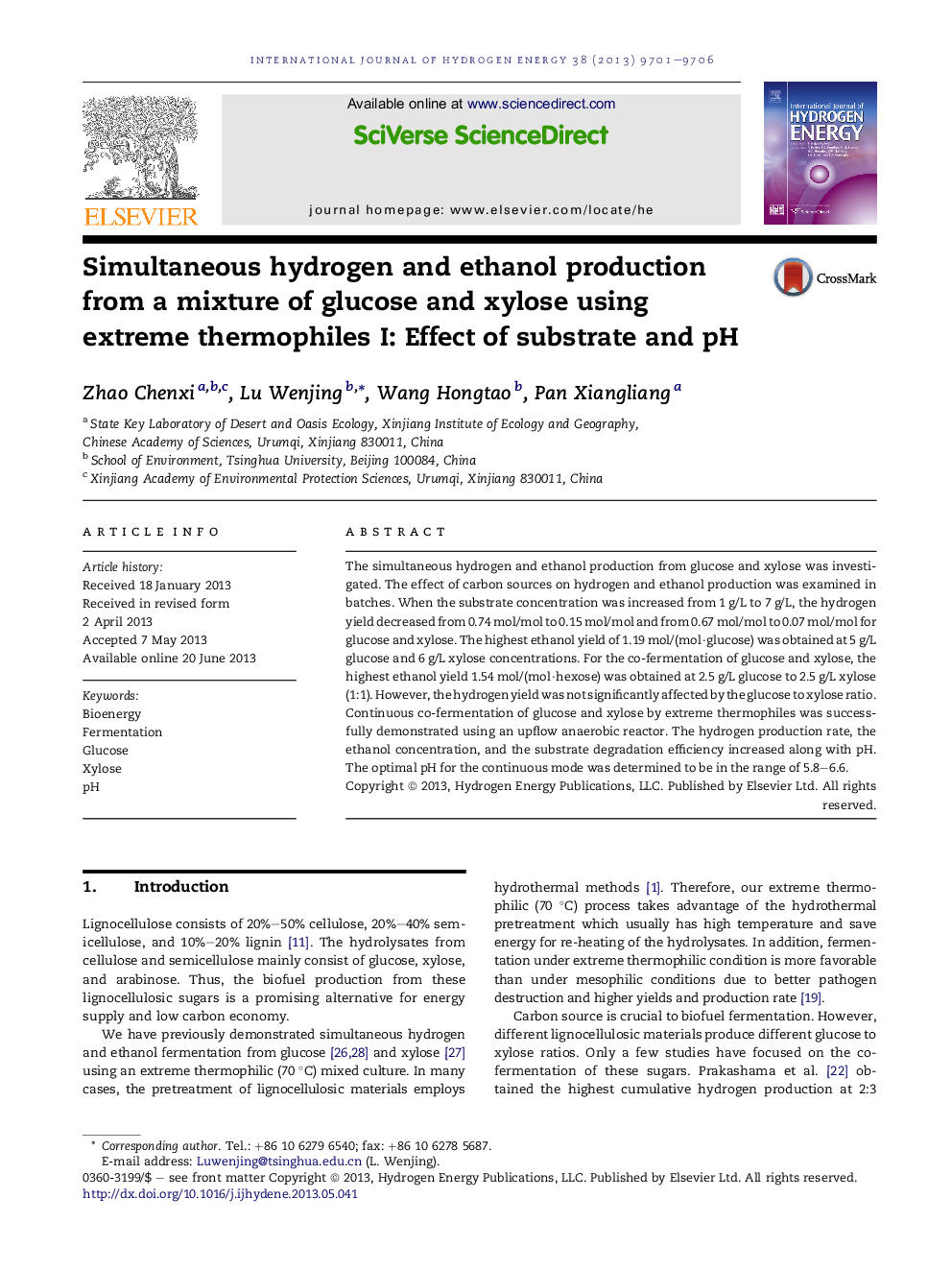| Article ID | Journal | Published Year | Pages | File Type |
|---|---|---|---|---|
| 7722289 | International Journal of Hydrogen Energy | 2013 | 6 Pages |
Abstract
The simultaneous hydrogen and ethanol production from glucose and xylose was investigated. The effect of carbon sources on hydrogen and ethanol production was examined in batches. When the substrate concentration was increased from 1 g/L to 7 g/L, the hydrogen yield decreased from 0.74 mol/mol to 0.15 mol/mol and from 0.67 mol/mol to 0.07 mol/mol for glucose and xylose. The highest ethanol yield of 1.19 mol/(mol·glucose) was obtained at 5 g/L glucose and 6 g/L xylose concentrations. For the co-fermentation of glucose and xylose, the highest ethanol yield 1.54 mol/(mol·hexose) was obtained at 2.5 g/L glucose to 2.5 g/L xylose (1:1). However, the hydrogen yield was not significantly affected by the glucose to xylose ratio. Continuous co-fermentation of glucose and xylose by extreme thermophiles was successfully demonstrated using an upflow anaerobic reactor. The hydrogen production rate, the ethanol concentration, and the substrate degradation efficiency increased along with pH. The optimal pH for the continuous mode was determined to be in the range of 5.8-6.6.
Keywords
Related Topics
Physical Sciences and Engineering
Chemistry
Electrochemistry
Authors
Zhao Chenxi, Lu Wenjing, Wang Hongtao, Pan Xiangliang,
